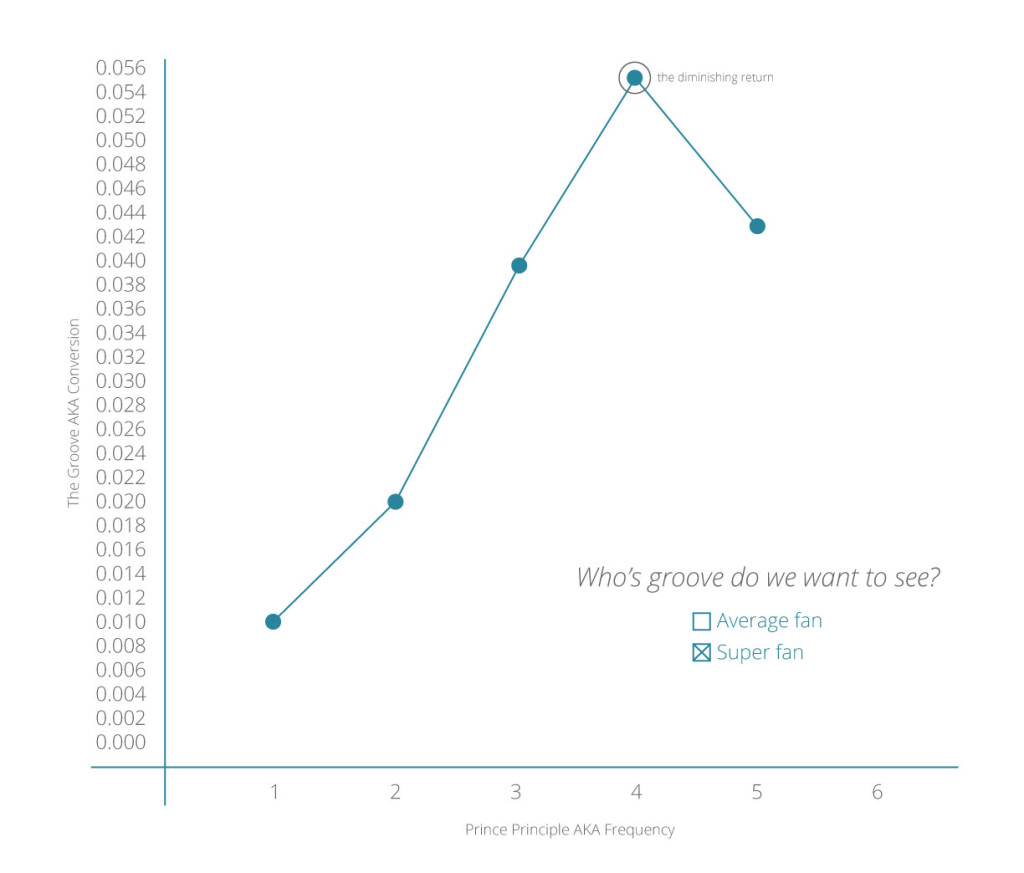“You can always tell when the groove is working or not.” – Prince
The Purple One knows when the groove is working, and optimizes his performances for it. We should be doing the same when it comes to email marketing. We’re always asking ourselves if our groove is working—are we marketing too much or too little? How much is enough, but not overkill? Unfortunately we can’t just party like it’s 1999, because in 1999 there was no CAN-SPAM—marketing was a free-for-all for blasting as many people as possible. Today, customers have protection, and, better yet, those little unsubscribe and spam buttons. The solution? Look to Prince.
Prince knows his audience, and can tell when the groove is working—his fans let him know by engaging with him. We should all be doing what Prince does!

Is Prince the Master of Frequency?
Prince once did a four-hour show with five encores! He doesn’t always do this, so why on this occasion did he put fans through an endurance match of a performance in a smaller venue? The answer: they were super-fans, and industry advocates—they would engage no matter how long he played. Had he played the same show for a sold-out stadium of average fans mixed with some super-fans, the end result would have been the same: when the lights came on, the only remaining fans would be those super-fans. In marketing, we also have super-fans or, as we call them, brand advocates. They’re the ones who we can count on to stick around and keep paying attention.
When it comes to frequency optimization, you too can be a master—even if you can’t sing like Prince.
The key to mastering frequency: Test, test, test!
5 Basic Steps to Get Started:
1. Identify your goals and hypothesis: You might hypothesize that increasing your email send frequency from once every two weeks to once a week will increase your click-through rate by 20% to start.
2. Identify the right metrics to measure the point of diminishing return: Measure the metrics to support your hypothesis, but also measure supporting metrics to get a full view of how frequency is affecting response.
3. Get some tests running: Since there is no “average customer,” it’s best to test customer segments whenever possible.
4. Measure the Groove: Every customer has their own groove. You’ll want to measure against your hypothesis and note when frequency no longer leads to improvement based on your hypothesis— this is your diminishing return.
5. Repeat: Your customers are constantly evolving, and so are their needs.
We want to hear your experience with frequency testing—every customer list is different. Or, just let us know your favorite Prince song—that works too!


